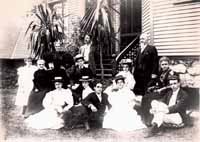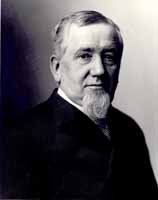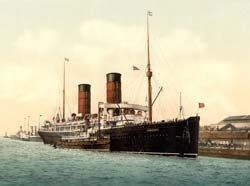Pullman's Sons
You are at Home -> George Mortimer Pullman -> Pullman's SonsGeorge, Jr. and Walter (Sanger) Pullman
In all truth, Chicago is a hard town to scandalize, but the Pullman twins did it most effectively. -- The [New York] World, November 29, 1901, p. 9 George M. Pullman married Harriett Sanger, daughter of a construction company owner, on June 13, 1867. Together, they had four children: Florence (1868-1937), Harriett (1869-1956), and the twins George, Jr. (1875-1901) and Walter Sanger [known as Sanger] (1875-1905). While Harriett was described by contemporaries as going through a "boy-crazy" phase, both girls eventually settled into mostly peaceful and respected lives.
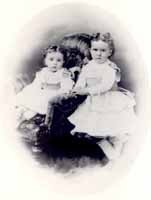 Early portrait of Florence and Hattie (Harriett) More… |
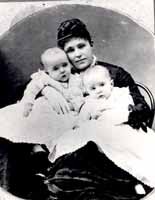 Harriett holding the twins More… |

Account of scandal involving George, Jr., with Mrs. Blanche Bowers, San Francisco Call, March 6, 1900 |

Bowers' Lawsuit, San Francisco Call, June 14, 1901 |

Death notice of George, Jr. “A warning to rich fathers!”, The World, Nov. 29, 1901 |

Death notice of Sanger Pullman, San Francisco Call, August 16, 1905 |
THE PULLMAN HISTORY SITE

George M. Pullman and his Family
The Twins
Images of Pullman and Family
Other Pullman-Related Sites
- Historic Pullman Garden Club - An all-volunteer group that are the current stewards of many of the public green spaces in Pullman. (http://www.hpgc.org/
- Historic Pullman Foundation - The HPF is a non-profit organization whose mission is to "facilitate the preservation and restoration of original structures within the Town of Pullman and to promote public awareness of the significance of Pullman as one of the nation's first planned industrial communities, now a designated City of Chicago, State of Illinois and National landmark district." (http://www.pullmanil.org/)
- The National A. Philip Randolph Pullman Porter Museum is a 501(c)3 cultural institution. Its purpose is to honor, preserving present and interpreting the legacy of A. Philip Randolph, Pullman Porters, the Brotherhood of Sleeping Car Porters and the contributions made by African-Americans to America's labor movement. ((http://www.nationalpullmanportermuseum.com/)
- Pullman Civic Organization - The PCO is a strong and vibrant Community Organization that has been in existence since 1960. (http://www.pullmancivic.org/)
- Pullman National Monument - The official page of the Pullman National Park. (https://www.nps.gov/pull/)
- South Suburban Genealogical & Historical Society - SSG&HS holds the Pullman Collection, consisting of personnel records from Pullman Car Works circa 1900-1949. There are approximately 200,000 individuals represented in the collection. (https://ssghs.org/)
- The Industrial Heritage Archives of Chicago's Calumet Region is an online museum of images that commemorates and celebrates the historic industries and workers of the region, made possible by a Library Services and Technology Act grant administered by the Illinois State Library. (http://www.pullman-museum.org/ihaccr/)
- Illinois Digital Archives (IDA) is a repository for the digital collections libraries and cultural institutions in the State of Illinois and the hosting service for the online images on this site. (http://www.idaillinois.org/)
